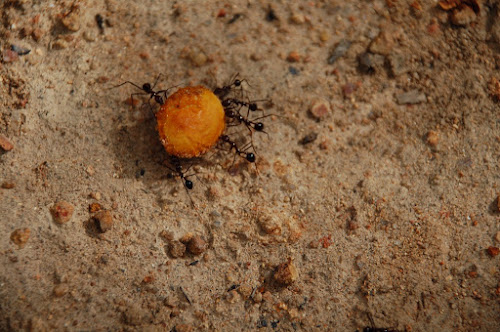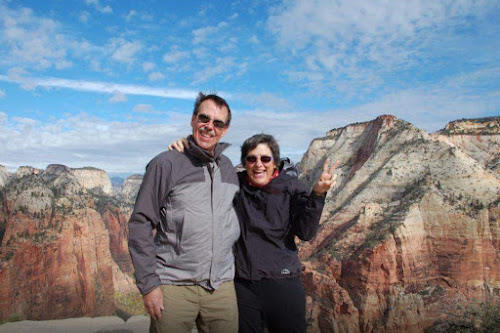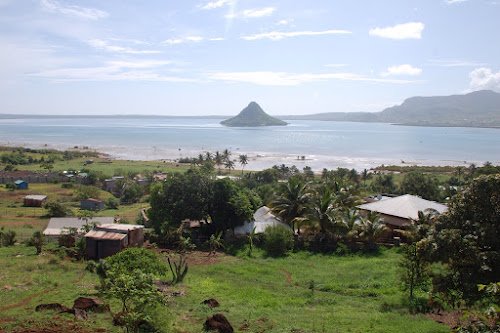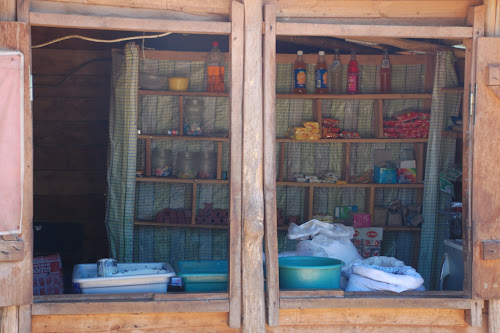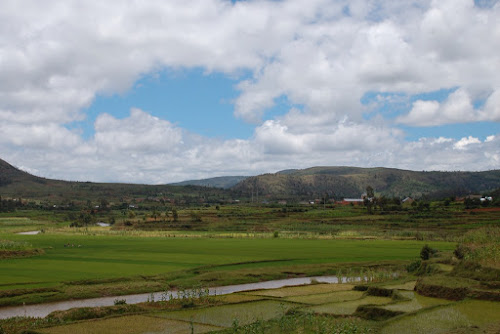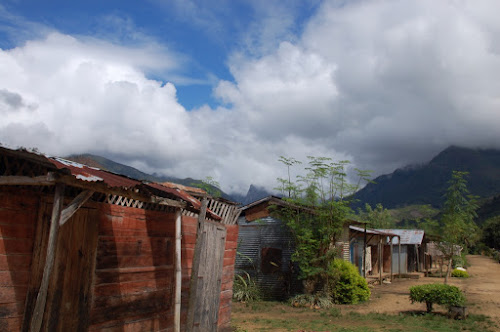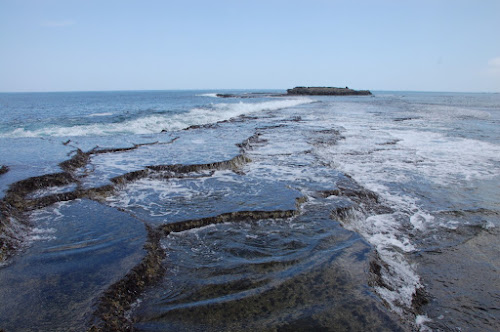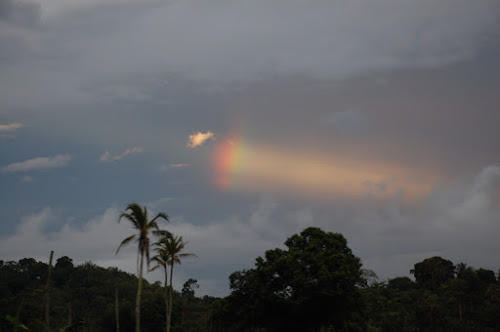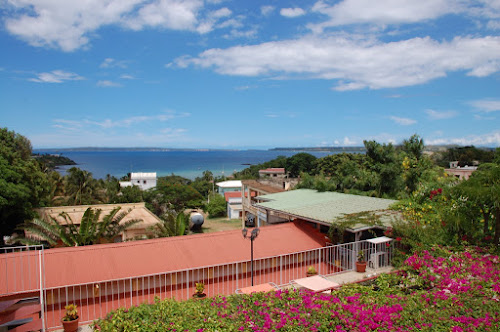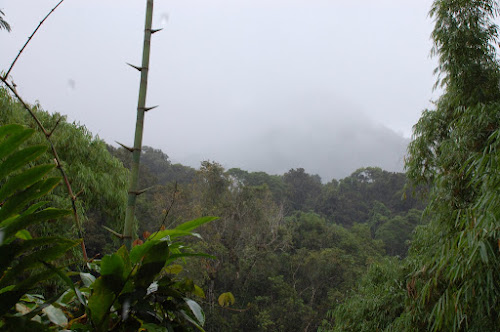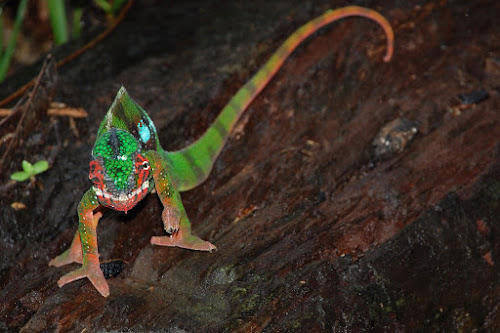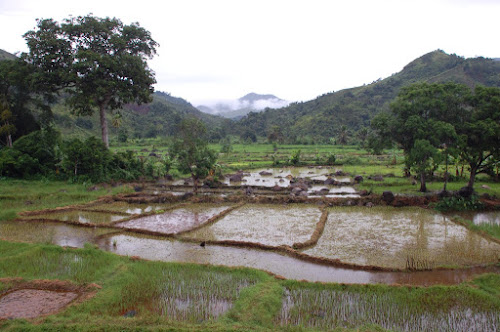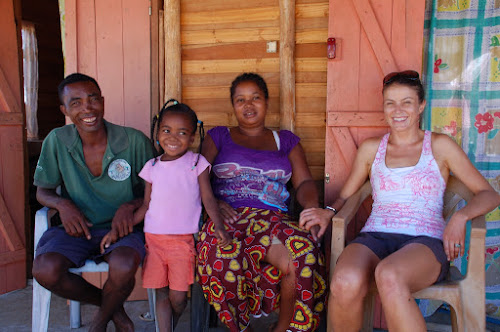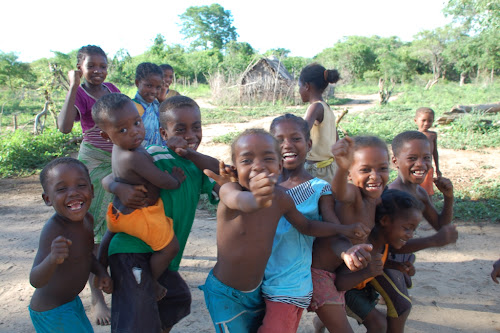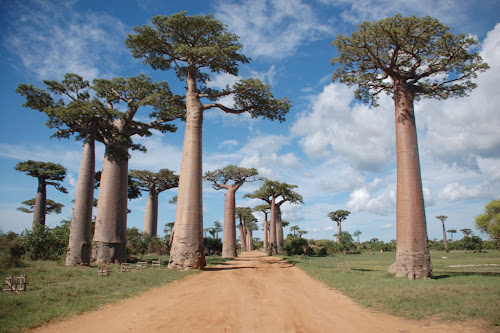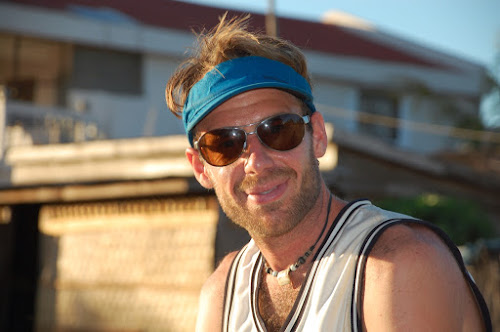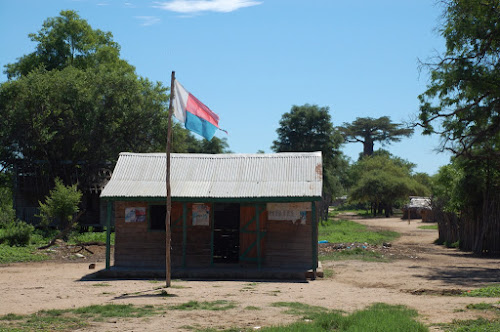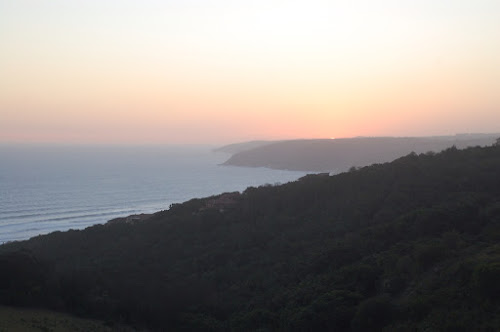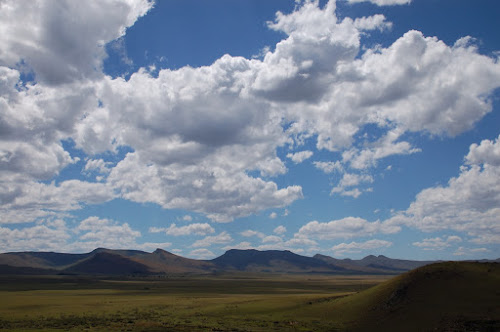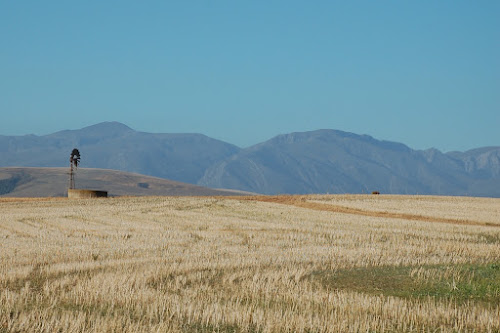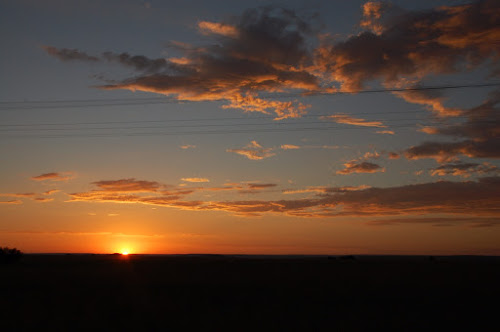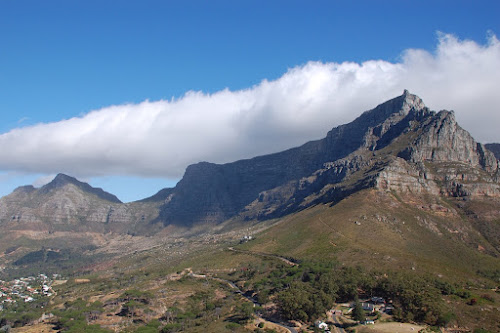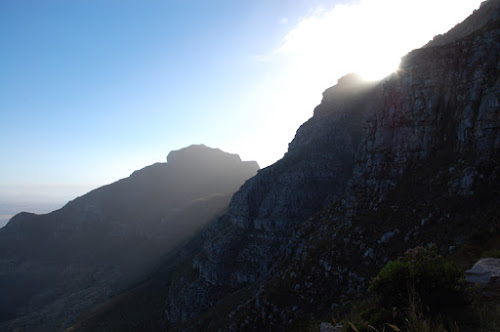Today, we (Junior and Senior Korol couples) and our driver Moreno loaded into a 4X4 white SUV -- leaving the beautiful southern coastal town of Fort Dauphin -- to travel 50 miles to visit Madagascar's spiny forest. We left our Fort Dauphin bungalows overlooking the ocean at 9:00 am.
We arrived at the office of Madagascar National Park's service at 12:45 pm. After almost 4 hours of rutted roads, degraded tarmac, buying various supplies (such as $7 knock-off tevas), and insisting to Moreno and others that we really did want to go to the spiny forest, we found ourselves in a one-room hut/office buying our tickets to enter the forest. We are the first visitors of 2013.
To walk through the forest of any Madagascar National Park, it is compulsory to have a guide. Our guide for the day would be Charles --a 5 foot tall, certainly good enough english speaking man who is of the Antandroy tribe of the Malagasy. The Antandroy are notorious for their numerous taboos and how their dialect of Malagasy is the most different from the official Malagasy language -- 30% or so of the words are different.
Charles led us down the path into the spiny forest as a fast clip. The spiny forest is like nowhere in the world -- 95 percent of its plant species are endemic (meaning that they are only found in Madagascar, and only in the ecoregion of southern Madagascar). Of these plant species, a family of plants, the Didiereaceae, dominate. The Didiereaceae trees are tubular shaped trees with both leaves and thorns that directly jut out from the trunk. The vibrancy of the leaves combined with the ominous thorns drew out reverential wonder as we followed our guide, Charles, through this dense forest of desert-like succulent plants.
The only thing faster than our pace, was Charles' rapid fire delivery of info about the forest. However, within 200 meters, the unusual landscape was eclipsed momentarily by Charles' bizarre behavior. As we had wandered further into the forest, Charles had become more and more animated by the plants and their various uses. We had been excited to have such an enthralled guide and we had paused to discuss the medicinal qualities of a draping brown tree and were about to continue on our way when Charles crouched to the ground. He seemed to be looking at something and we all strained to see whether a camouflaged chameleon or a candy-bar sized bug was the focus of his attention.
None of us could see anything as Charles' hand began to twirl around a plant. We start nervously questioning him -- "Charles, what are we looking at?" "What is it?" "What do you see?" No response. Mu switch from English to Malagasy. No response. He stays crouched in the sun as beads of sweat begin to pour down his face. The 4 of us step away to discuss: Is he sick? Is it neurological? Is it a seizure? He isn't shaking so I use a stronger tone and ask him to come sit in the shade. A response! He moves to the shade. We give him water and tell him to drink, in Malagasy. He seems to no longer understand English. He obeys and drinks some water. We give him some cookies and he eats a little but remains unresponsive. We wonder what to do. Should we try to herd him back to the office and 10-house village? Should we continue to try to talk to him? Should we give him a little space to recover? We decide to give him some space to recover. We tell him that he should rest in the shade and we will walk in the forest a little without him. This seems to jar him back into consciousness and he responds in English that he will come with us. I tell him in Malagasy to stay and to rest. He says no -- he will continue. He gets up -- his eyes are now bloodshot and he continues to walk further into the forest. He walks as if he is an unsure mummy, trance-like but clumsy, with no connection to the surrounding people or place. No, we say, "Let's return". Back we go.
15 minutes later, we are back in the one-room office and he tells me in English that he is normal. Mu asks him to explain what happened and he begins talking about how "they do not want him to pray" . . . that he has to worship Jesus. I ask him about the devil and he seems relieved. "Yes," he says, "the devil was inside of me." Our driver, Moreno, is listening and he nods and is non-plussed by Charles' words. As if it is perfectly normal for someone to be possessed by the devil. And apparently, the devil possession has been happening to Charles for the past 4 years.
Moreno, Charles, and Mu then discuss what we should do next. Meanwhile, Deborah, Bill (look out for a guest blog post from them) and I, the tourists, after traveling for hours, were only in the forest for 15 minutes before the devil possession and we'd like to spend a little more time in this bizarre and amazing place. Charles is keen to go back out again with us. Moreno offers that he could come and watch Charles from behind. I plead that perhaps the tourists could simply go by ourselves, even though, it is against Park rules to hike without a guide. After stating that I had worked in a forest before and that we would not get lost, Moreno and Charles eventually acquiesce. We are allowed to hike on our own.
Back in the spiny forest, we stumble upon parrots speaking to each other, an immature eagle, and the severely endangered radiated Madagascar tortoise. Some believe that this beautiful creature may be extinct in 20 years due to habitat destruction and poaching. Hopefully, the radiated tortoise beats these dismal statistics and any other lurking devils.
After our rare opportunity of watching the tortoise, we return to the Park office/hut and bid Charles, and the devil, adieu.






